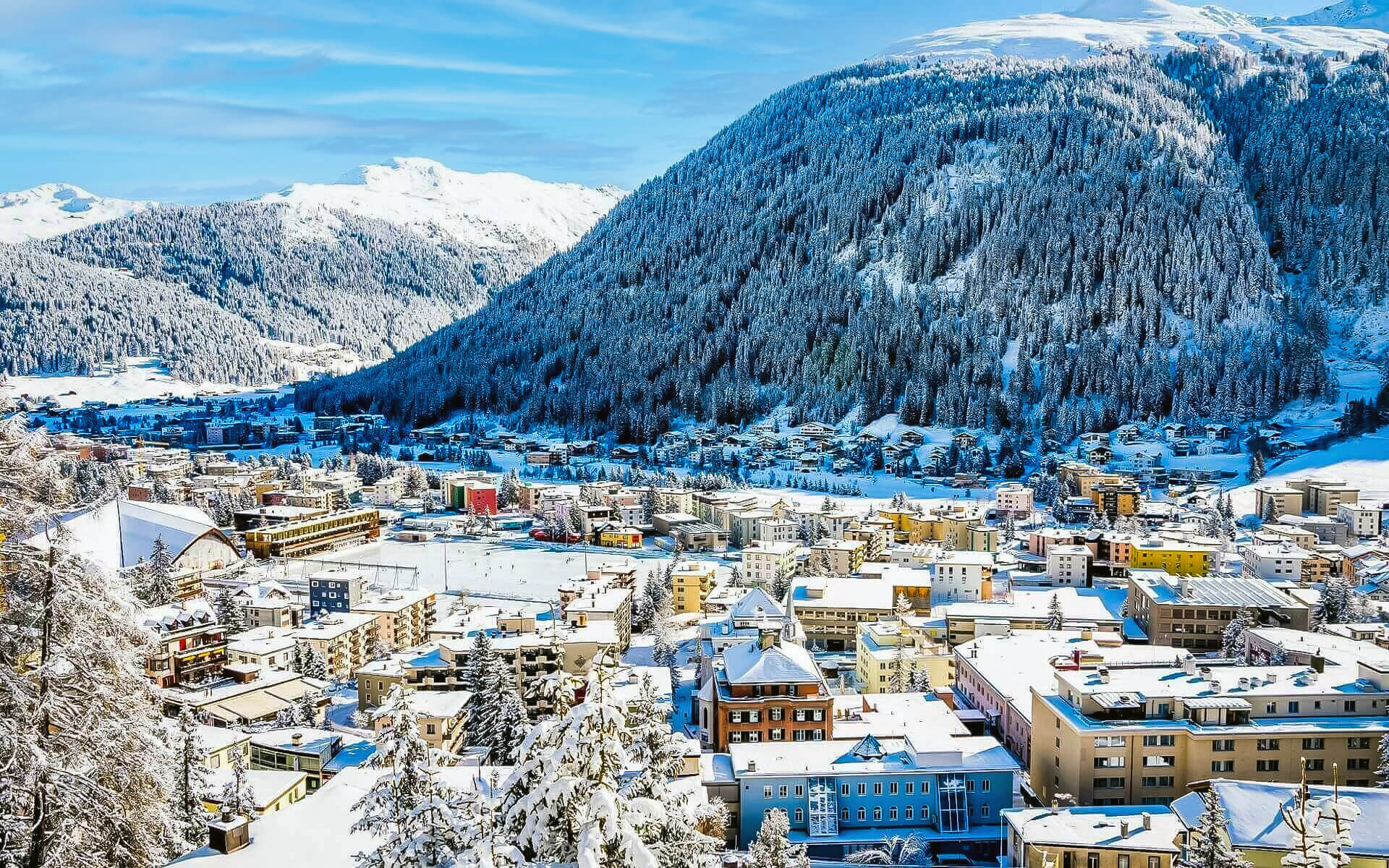Davos is a winter and summer tourist community in the Graubünden region of eastern Switzerland. Davos sprang to prominence in the early 1990s as the site of the World Economic Forum, an annual winter meeting of international politicians and businessmen who represented a transnational elite. Davos, along with the neighbouring town of Klosters, provides a broad range of winter sports activities as well as summer hiking paths situated in spectacular Alpine surroundings.
Davos Klosters, at 1,560m, is one of Europe’s highest Alpine resorts, with a vast network of ski slopes stretching from the Rinerhorn in the south west to Pischa in the north east, with more than 320km of well-groomed slopes including Klosters’ ski areas of Gotschna and Madrisa and some of the best off-piste skiing in the Alps.
The Davos and Klosters mountain railroads and ski lifts united and renamed in 2003. Davos Klosters is now marketed as a whole, and the whole is greater than the sum of its parts: the Davos Klosters region includes six winter-sport areas, with Schatzalp (the slow mountain) as a sixth ski area with a separate lift ticket, more than 320 kilometers of well-groomed pistes, 200 kilometers of cross-country ski trails, and 150 kilometers of prepared winter-walking trails. The piste map may seem to indicate that this is mostly an intermediate resort, but don’t be misled; the Davos Klosters region offers tremendous off-piste potential.
Davos stretches over many kilometres along the vast Landwasser River Valley. The quality and range of its amenities are unparalleled: first-rate leisure possibilities in both summer and winter in a pristine, majestic mountain landscape, excellent meeting infrastructure, globally known sports and cultural events, and renowned museums, galleries, and music festivals. Davos has established its unique architectural style, with its distinctive alpine flat roof. The Davos ice stadium (1981) is one of Europe’s most architecturally remarkable structures of its sort. The alpine metropolis also has excellent hotels, restaurants, and retail possibilities.
Davos’ alpine environment is stunning, and there is much more going on than just skiing. Annually, the World Economic Forum, a Nordic World Cup Race, the professional ice hockey Spengler Cup, and the UK parliamentary ski races are held here. It also serves as the home of the world-renowned Institute for Snow and Avalanche Research. Davos was an early innovator in terms of mountain leisure stays due to the establishment of an appealing variety of leisure amenities all around the urbanised center. As a result, Davos has had coffee shops, theaters, concerts, and even six cinemas to amuse its visitors for over a century. This position as a trendsetter, which served to foster a culture of hope throughout the years of TB in Europe, has remained true of what is now the highest town in the Alps to this day. As a result, the Alps have the most diversified array of evening activities. Furthermore, the town has a plethora of ski huts and snow bars where tourists can unwind with vibrant après ski fun. Finally, the fun mountain Jakobshorn may be considered the origin of après ski.


